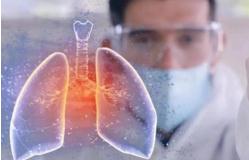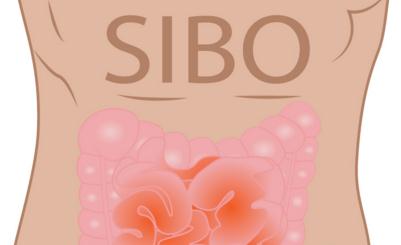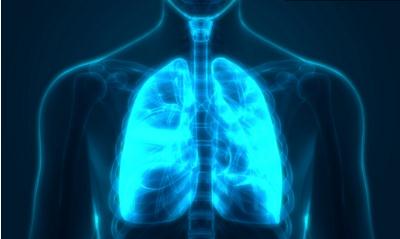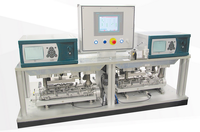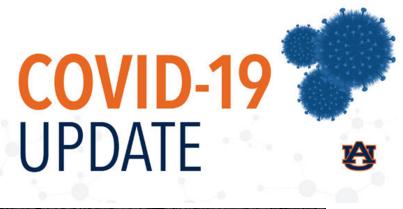

-
- 01 | Astrotech’s BreathTest-1000 C Astrotech Corporation [NASDAQ: ASTC] ann..
- 02 | New breath test adds hydrogen Recently, the small intestine bacterial ..
- 03 | Cancer breath test detects 80 The pursuit of early-stage cancer screen..
- 04 | Gemelli Biotech Launches Novel LOS ANGELES RALEIGH, N.C.--(BUSINESS WIR..
- 05 | Promising breath-test for canc The global quest to use a persons breath..
- 06 | New Optical Method Could Enabl Investigators have developed an extremel..
-
- 01 | Astrotech’s BreathTest-1000 C Astrotech Corporation [NASDAQ: ASTC] ann..
- 02 | Cancer breath test detects 80 The pursuit of early-stage cancer screen..
- 03 | Gemelli Biotech Launches Novel LOS ANGELES RALEIGH, N.C.--(BUSINESS WIR..
- 04 | New breath test adds hydrogen Recently, the small intestine bacterial ..
- 05 | Promising breath-test for canc The global quest to use a persons breath..
热点推荐
- 01 | 中科院无创筛查获新突破!做个深 食管癌是一种常见的恶性肿瘤,在全球范围内..
- 02 | 先亚集团研发的高新科技产品红细 一、概述 通过呼气测定来进行人体红细胞寿..
- 03 | Capnia Inc公司研发的便携式呼气 美国Capnia Inc公司研发了一款便携式呼气末..
- 04 | 以色列新型仪器用呼气成分诊断疾 我们身体“运行”的过程中会产生许多代谢物..
New breath test adds hydrogen sulfide to better understand the microbiome in patients
Recently, the small intestine bacterial overgrowth breath test was launched by Cedars-Sinai to diagnose small intestine bacterial overgrowth related to irritable bowel syndrome.
Healio Gastroenterology spoke with Mark Pimentel, MD, executive director of the medically associated science and technology (MAST) program at Cedars-Sinai, on how GIs can use the breath test and what this new device means for patient care.
SIBO breath test was launched by Cedars-Sinai to diagnose small intestine bacterial overgrowth related to IBS.
Source: Adobe Stock
Healio: How do general GIs use the SIBO breath test?
Pimentel: Diagnosis of small intestine bacterial overgrowth is quite common and has become better recognized in the last 10 or so years partly because the tools for diagnosing are improving. So, it's quite commonly used; there may be as many as 1,000 breath tests a day done in the United States.
Healio: How is the SIBO breathing test being used in clinics since the launch?
Pimentel: Currently the device is located in the clinical laboratory improvement amendments, or CLIA, certified laboratory of Gemelli Biotech. They have launched a kit-based testing so doctors can order a breath test and then they'll get the kit to the patient. Then, the patient will send it in, and the results will be reported to the doctor. The novelty of the new test is that it adds hydrogen sulfide to other breath gases measured during conventional clinical breath test systems.
Healio: What does this breath test mean for patient care?
Pimentel: We don't have an easy way to diagnose microbiome disease. Our work at Cedars these last 20 years was trying to, first of all, validate breath testing. Breath testing prior to contemporary research really hasn't dissected what the breath test means. So for example, just this year we published a very important paper where we compared a breath test to actual sampling of the small intestine and we were able to prove the hydrogen sulfide criteria on breath test that truly represents bacterial overgrowth.
Our group and now many others have also been instrumental in demonstrating that methane on breath test is associated with constipation and that treating methane could improve constipation. So that's the second leg of the three legged chair of breath testing and its relationship to the microbiome and how it could help humans. The third leg of the chair, and the only other gas that wasn't measured, was hydrogen sulfide. Hydrogen sulfide can have toxic effects on the intestinal lining and so it was always believed that hydrogen sulfide could potentially be associated with diarrhea symptoms in patients, especially in functional GI disorders. We were able to prove now in a series of studies that hydrogen sulfide does that; it is associated with diarrhea. So, in summary, Hydrogen is now an important gas associated with bacterial overgrowth. Methane is now a validated a marker for constipation. Now, hydrogen sulfide could be a marker for diarrhea. The next step is trying to figure out what treatments work for each of these legs of the chair.


